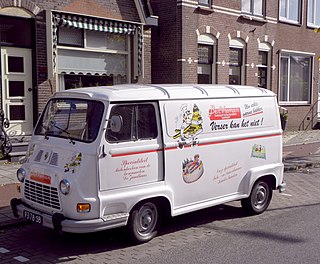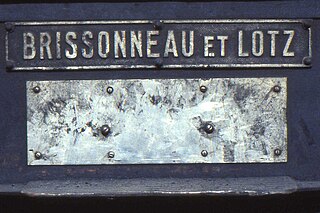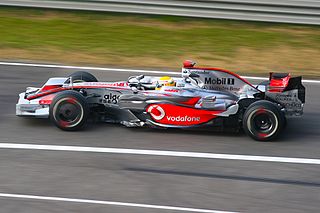Renault Classic's role
Created in the mid-1980s, the Renault Classic department preserve and share Renault's history. The team shows the pieces of the collection during various events (World Series by Renault, Le Mans Classic, Goodwood Festival of Speed, Mondial de l’Automobile…).
At the beginning, in this department there was only volunteers and retired Renault staff. Now, the department is separated in two poles counting 13 people.
The technical pole, composed of personnel selected in the firm, maintains and prepares the vehicles for the various shows. The team located in Flins factory can repair the very first vehicles from Renault as well as its F1 cars.
The team located in Plessis-Robinson manages the relationship with the Renault or Alpine fan clubs and prepares the public events which take place all year round.
During the shows, exhibitions or meetings, Renault Classic is surrounded by professional drivers as Jean Ragnotti but also by volunteers.
The collection
The Renault collection, conserved by Renault Classic, consists of over 740 vehicles retracing the history of the Group back to its creation in 1898. From old to new models and mass-produced vehicles to racing cars, the collection includes automobiles such as the Marne Taxis, NN, Juvaquatre, 4CV, Floride, Estafette, Renault 4 and Renault 5…
The collection also features a number of curiosities, including concept cars from all periods, a metro wagon fit on tires, two open-platform buses, two locomotives, a panoramic train, and an FT tank from the First World War. These treasures express the inventiveness and expertise displayed by Renault for more than a century.
This large collection is complemented by documentary archives representing several thousand meters of shelvings, more than 3200 miniatures and toys, 2200 posters, 270 scale models and pedal cars, and also various items.
Renault Classic highlights regularly the collection across Europe during exhibitions, motor shows, historical courses, reports, sport events, to keep it alive (World Series by Renault, Le Mans Classic, Goodwood Festival of Speed, Salons Automobile…).
S.C. Automobile Dacia S.A., commonly known as Dacia, is a Romanian car manufacturer that takes its name from the historical region that constitutes present-day Romania. The company was established in 1966. In 1999, after 33 years, the Romanian government sold Dacia to the French car manufacturer Groupe Renault. It is Romania's largest company by revenue and the largest exporter, constituting 8% of the country's total exports in 2018. In 2021, the Dacia marque sold 537,074 passenger and commercial vehicles.

The Billancourt engine was an automotive engine designed by Renault for the Renault 4CV, used subsequently until 1985. It later received the internal code "B", for Billancourt. The "sport" version is called Ventoux engine.

The Renault 5 Turbo or R5 Turbo is a sport hatchback automobile launched by the French manufacturer Renault at the Brussels Motor Show in January 1980. The car was primarily designed for rallying, but was also sold in a street version.
Renault Sport or Renaultsport, was the motorsport, performance and special vehicles division for Renault-badged cars. Renault Sport was officially established in 1976 as a merger between the Alpine and Gordini competition departments. It was reorganised in 2002 and 2016. In December 2021, all Renault Sport operations were merged into an Alpine-led business unit.

The Renault Estafette is a light commercial front-wheel drive van, first introduced in 1959 and made by the French automaker Renault between 1959 and 1980, initially using the water-cooled Renault Ventoux engine, then later the Cléon-Fonte engine in a range of body styles. It was replaced by the Renault Trafic.

Brissonneau et Lotz was a French locomotive engineering company, engaged in the manufacture of railway locomotives and wagons. The company was also a supplier of rolling stock to the Paris Metro, constructing in 1951 the first metro trains in the world to be equipped with rubber tyres.

The Renault Dauphine is a rear-engined economy car manufactured by Renault in a single body style – a three-box, 4-door sedan – as the successor to the Renault 4CV; more than two million were manufactured during its 1956–1967 production.

The Renault 4CV is a rear-engined, rear-wheel-drive, 4-door economy supermini manufactured and marketed by the French manufacturer Renault from August 1947 through July 1961. It was the first French car to sell over a million units, and was superseded by the Dauphine.

The Renault Caravelle is a sports car manufactured and marketed by Renault for model years 1958–1968 in a single generation — as a rear-engine, rear-drive open two/four-seater designed by Pietro Frua of Carrozzeria Ghia, using the floorpan and engine of the Renault Dauphine.

Goodwood Circuit is a historic venue for both two- and four-wheeled motorsport in the United Kingdom. The 2.367-mile (3.809 km) circuit is situated near Chichester, West Sussex, close to the south coast of England, on the estate of Goodwood House, and completely encircles Chichester/Goodwood Airport. This is the racing circuit dating from 1948, not to be confused with the separate hillclimb course located at Goodwood House and first used in 1936.
The 1987 World Rally Championship was the 15th season of the Fédération Internationale de l'Automobile (FIA) World Rally Championship (WRC). The season consisted of 13 rallies in the same venues of the previous season. The only alteration to the schedule was the move of the Olympus Rally from December to June on the calendar.

The McLaren MP4-23 was a Formula One racing car that was constructed by the Vodafone McLaren Mercedes team to compete in the 2008 Formula One World Championship. The chassis was designed by Paddy Lowe, Neil Oatley, Tim Goss, Andrew Bailey and Simon Lacey, with Mario Illien designing the Mercedes-Benz engine. It was revealed at Mercedes-Benz's motor sport museum in Stuttgart on 7 January 2008, and it had its first on-track appearance at Circuito Permanente de Jerez in Spain on 9 January. The car won the 2008 World Drivers' Championship in the hands of Lewis Hamilton, but finished second in the Constructors' Championship, which was won by Scuderia Ferrari Marlboro. The car, along with its rivals during the season, marked the end of an era of complex aerodynamic appendages on the bodywork, which would be banned for 2009. As of 2022 the MP4/23 is the last McLaren Formula One car to win the drivers' championship.

The Renault Celtaquatre is a small family car produced by the French manufacturer Renault between 1934 and 1938. Although French, it took some of its styling cues from American cars of the time. Its rounded silhouette gave it the nickname “Celtaboule” ("Celtaball").
Bobby Verdon-Roe is a British professional racing driver who has raced in various formats of motor sport throughout his career. He has won Formula Renault, TVR Tuscan and Historic Formula One Championships.

The Flins Renault Factory is a car factory in France, straddling the towns of Flins and Aubergenville in Yvelines, approximately 40 km from Paris. It is the largest Renault Group factory in mainland France. It was designed by the architect Bernard Zehrfuss and opened in 1952. It is 237 hectares in extent, of which 67 are occupied by covered buildings.

The Novaquatre is a car first presented in the Autumn of 1937 by Renault and produced until 1940. It was presented in 1937 as an economy version of the Primaquatre, combining the body of the little Renault Celtaquatre, with the 2383 cc 4-cylinder water-cooled engine of the larger Renault Primaquatre.

Société des usines Chausson was a French manufacturing company, based in the Paris region between 1907 and 2000, and known as a supplier of components to the automotive industry.

The Renault R.S.16 was a Formula One racing car designed by the Renault Sport Formula One Team to compete in the 2016 Formula One season, and marked Renault's return to the sport as a constructor after a five-year absence.

The Renault Sport R.S. 01 is a sports racing car manufactured by Renault Sport, the performance division of French automaker Renault. It was originally built to compete in the Renault Sport Trophy, the company's one-make racing series, serving as a replacement for the Renault Mégane Trophy. The car was later homologated for Group GT3 by the SRO Motorsports Group for the car to be able to compete in GT3 class racing series. The Trophy-spec R.S. 01 is the most powerful one-make racer built by Renault, and also the only race car not based on a production car.

The Renault R.S.18 is a Formula One racing car designed and constructed by the Renault Sport Formula One Team to compete during the 2018 FIA Formula One World Championship. The chassis was designed by Nick Chester, Chris Cooney, Martin Tolliday, and Pete Machin with Bob Bell overseeing the design and production of the car as a chief technical officer and Rémi Taffin leading the powertrain design. The car was driven by Nico Hülkenberg and Carlos Sainz Jr. The car made its competitive debut at the 2018 Australian Grand Prix.





















